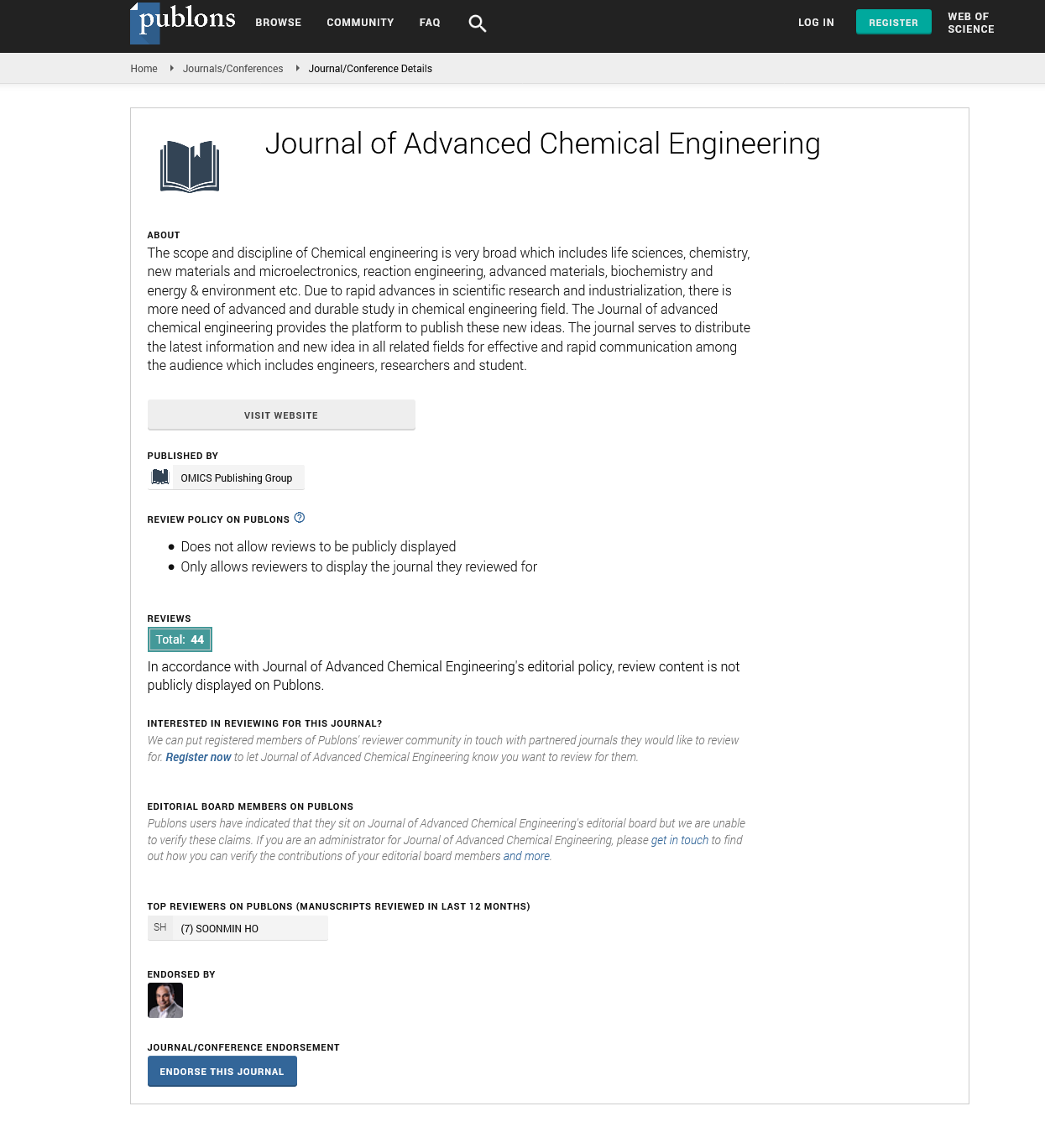Indexed In
- Open J Gate
- Genamics JournalSeek
- Smithers Rapra
- RefSeek
- Directory of Research Journal Indexing (DRJI)
- Hamdard University
- EBSCO A-Z
- OCLC- WorldCat
- Scholarsteer
- Publons
- Geneva Foundation for Medical Education and Research
- Google Scholar
Useful Links
Share This Page
Journal Flyer

Open Access Journals
- Agri and Aquaculture
- Biochemistry
- Bioinformatics & Systems Biology
- Business & Management
- Chemistry
- Clinical Sciences
- Engineering
- Food & Nutrition
- General Science
- Genetics & Molecular Biology
- Immunology & Microbiology
- Medical Sciences
- Neuroscience & Psychology
- Nursing & Health Care
- Pharmaceutical Sciences
Perspective - (2022) Volume 12, Issue 10
Chemical Kinetics and its Mechanism
Zhang Chun*Received: 07-Oct-2022, Manuscript No. JACE-22-18867; Editor assigned: 10-Oct-2022, Pre QC No. JACE-22-18867 (PQ); Reviewed: 28-Oct-2022, QC No. JACE-22-18867; Revised: 03-Nov-2022, Manuscript No. JACE-22-18867 (R); Published: 11-Nov-2022, DOI: 10. 35248/2090-4568.22.12.253
Description
By carefully tracking the positions and velocities of each molecule and changing the populations of the species whenever a chemical reaction takes place, a molecular dynamics simulation is the most realistic technique to show the temporal evolution of a system of chemically reacting molecules. According to this perspective, chemical reactions are seen as distinct, essentially instantaneous physical events. There are two basic types of chemical reactions: unimolecular reactions, which are caused by processes inside a single molecule, and bimolecular reactions, which are caused by collisions between two molecules. Sequences of two or more elemental reactions are roughly represented by trimolecular and higher order reactions.
Both the inhibition and stimulation of combustion are taken into consideration when modifying the fuel oxidation kinetics. The characteristics of detailed kinetic models are then used to describe simplified kinetic models. The use of kinetic models to study actual combustion systems is then presented, starting with purely kinetic-thermodynamic applications like shock tubes, detonations, plug flow reactors, and stirred reactors, where transport effects like the diffusion of mass and heat can be disregarded. The description of laminar flames and the relationship between diffusive transport and chemical kinetics is followed by applications of laminar flame models to real-world combustion issues.
The use of quantum mechanics to chemical reactions has recently received a lot of attention. The bulk of the time, however, it has been assumed that the actual reaction processes follow the principles of classical mechanics, with the interatomic forces merely being calculated using the quantum-mechanical theory. However, a number of scholars have made the argument that the actual transition processes must be viewed as nonclassical. Some of these authors assert that this approach is necessary for a true understanding of chemical processes, just as it is generally known that classical considerations cannot account for the phenomena seen in the case of radioactive disintegration.
However, it appears that there is universal agreement that for chemical processes, the outcomes of a precise quantummechanical treatment would only slightly differ from those of classical mechanics. This opinion doesn't appear to be supported by any published data; instead, it appears to be based primarily on approximations of treatment procedures. The current work makes a contribution to a more precise understanding of the issue. Modern theories of reaction mechanisms hold that the responding system experiences its greatest potential energy when transitioning adiabatically from the start to the end state. The heat of activation for the reaction is the energy difference between the beginning state and the maximum (E). We can consider the system as a straightforward form of chemical process A mass m particle travels from point a to point b across a variable potential energy zone V. (x). The potential energy reaches its maximum value, E, between a and b. Q, the heat of reaction, measures the energy disparity between a and b.
Chemical processes that produce entropy are analogous to irreversible processes. The category of nonintegrable Poincare systems includes chemistry. Generally speaking, resonances—or transitions of quantum states—are connected to chemistry. We have thoroughly examined some very basic examples of these processes, such as the decay of an unstable state. (There are typically numerous time scales in such situations.) We obtain an invertible, non-distributive, non-unitary, non-star unitary operator (which reduces to the unitary transformation operator U for integrable systems). The interaction of each species with all other types of molecules in the system, including the solvent, determines the explicit form of each species. The key property that follows from is that kinetic equations with broken time symmetry are now used to describe nonintegrable systems rather than Hamiltonian equations. It is simple to demonstrate that we have irreversible processes and entropy production once we have the kinetic equations.
Citation: Chun Z (2022) Chemical Kinetics and its Mechanism. Adv Chem Eng. 12:253.
Copyright: © 2022 Chun Z. This is an open-access article distributed under the terms of the Creative Commons Attribution License, which permits unrestricted use, distribution, and reproduction in any medium, provided the original author and source are credited.

